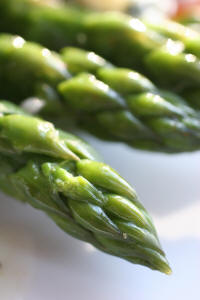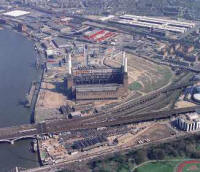Asparagus
Information about asparagus plus large Asparagus
recipe collection
Â
May is Asparagus Month
Â
Â
 Asparagus (Liliaceae-Asparagacease
) is a member of the lily family and a distant cousin of the leek and onion.Â
Considered by many to be the queen of vegetables, asparagus has been, and still is, a highly prized vegetable which,
unfortunately, has a relatively short season of just 10 weeks. Asparagus (Liliaceae-Asparagacease
) is a member of the lily family and a distant cousin of the leek and onion.Â
Considered by many to be the queen of vegetables, asparagus has been, and still is, a highly prized vegetable which,
unfortunately, has a relatively short season of just 10 weeks.
Â
Origin & History of Asparagus
Â
Asparagus is believed to have originated in the eastern Mediterranean area,
however archaeologists have found traces of wild varieties in Africa and it is
also thought to have been cultivated in ancient Egypt as evidenced byÂ
ancient Egyptian writings.
Â
Asparagus gets its name from the ancient Greek �aspharagos� which in turn
originates from the Persian word �asparag� meaning sprout, stalk or shoot. It
was popular with the ancient Greeks who believed it to have both sacred and
aphrodisiac powers and it is known that Hippocrates used it for medicinal
purposes such as the treatment of diarrhoea and urinary problems.
Â
They were popular with the
Romans too who had written instructions on how to grow asparagus. So
prized were these perennial shoots by the Romans that not only did they enjoy
eating them in season but they were also the first to preserve it by freezing as early as the 1st Century AD when fast chariots would take the fresh asparagus
from the Tiber River area to the Alps
where it kept for six months until the Feast of Epicurus. The Roman Emperor
Caesar Augustus coined the phrase 'velocius
quam asparagi conquantur', meaning to do something quicker than you can
cook asparagus. Â
Â
The Romans are responsible for having introduced asparagus to England, where it
gradually gained favour with the nobles and by the early 16th century, it was
widely served in many of the Royal courts of Europe.
Â
|

Battersea in the 21st Century
with
its famous Power Station |
By the
17th Century, asparagus was being commercially cultivated in England and,
believe it or not, one of the prime location for its
cultivation was in the village of Battersea just outside the city of London,Â
where they were famously sold as �Battersea bundles�.
Asparagus was so popular that the area of cultivation was widened to
include Fulham, Gravesend, Isleworth and Deptford just in order to
supply London. |
Â
Asparagus was so popular that they even got a mention by
Samuel Pepys, the diarist, who recorded that he bought a bundle of "sparrow
grass" in Fenchurch Street for 1s.6p.
By the 19th Century London was becoming so built up that new asparagus fields were established in The Vale of Evesham,
Worcestershire, which is still regarded as the home of asparagus today.
Asparagus
Nutritional Values
Â
|
|

 Asparagus (Liliaceae-Asparagacease
) is a member of the lily family and a distant cousin of the leek and onion.Â
Considered by many to be the queen of vegetables, asparagus has been, and still is, a highly prized vegetable which,
unfortunately, has a relatively short season of just 10 weeks.
Asparagus (Liliaceae-Asparagacease
) is a member of the lily family and a distant cousin of the leek and onion.Â
Considered by many to be the queen of vegetables, asparagus has been, and still is, a highly prized vegetable which,
unfortunately, has a relatively short season of just 10 weeks.